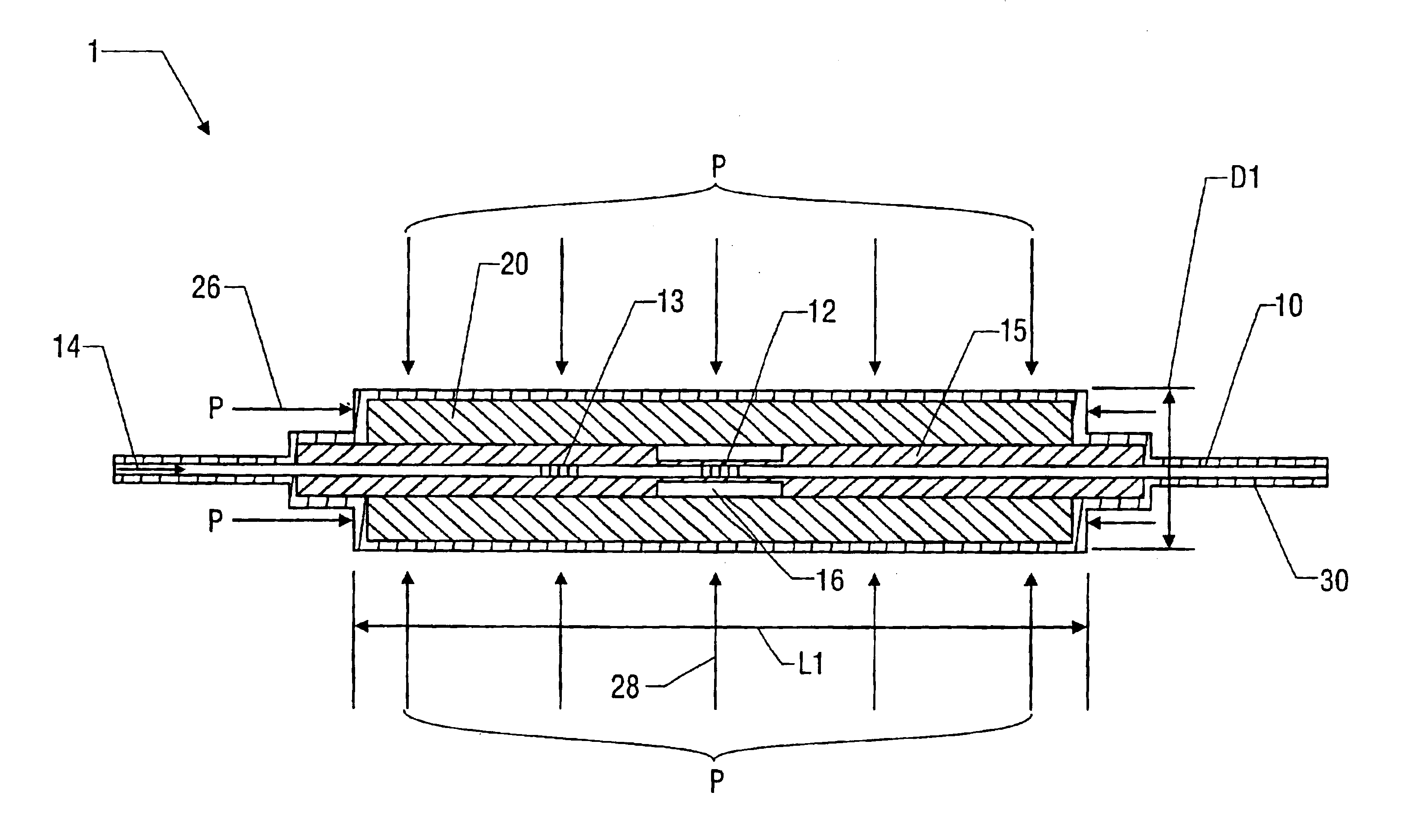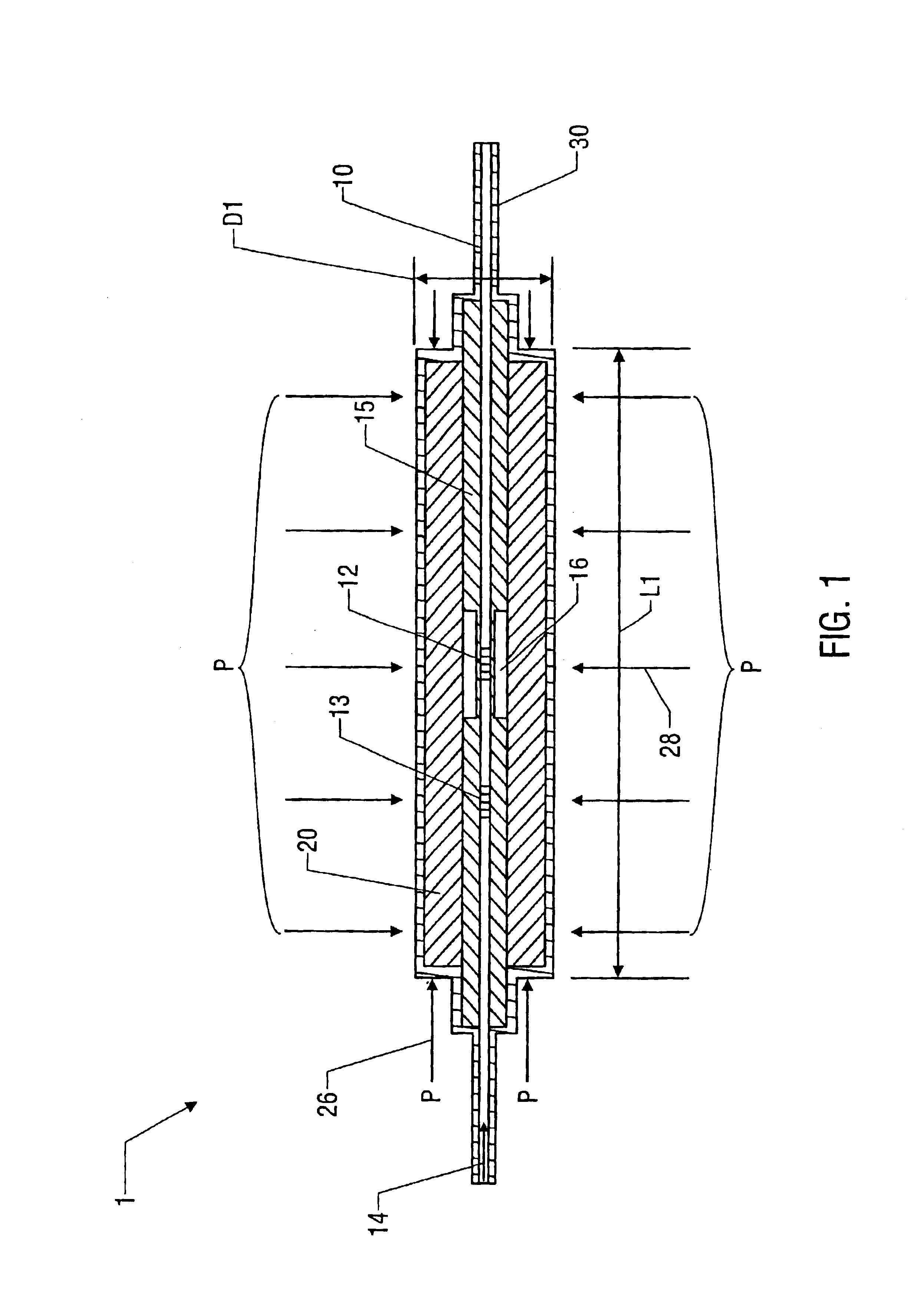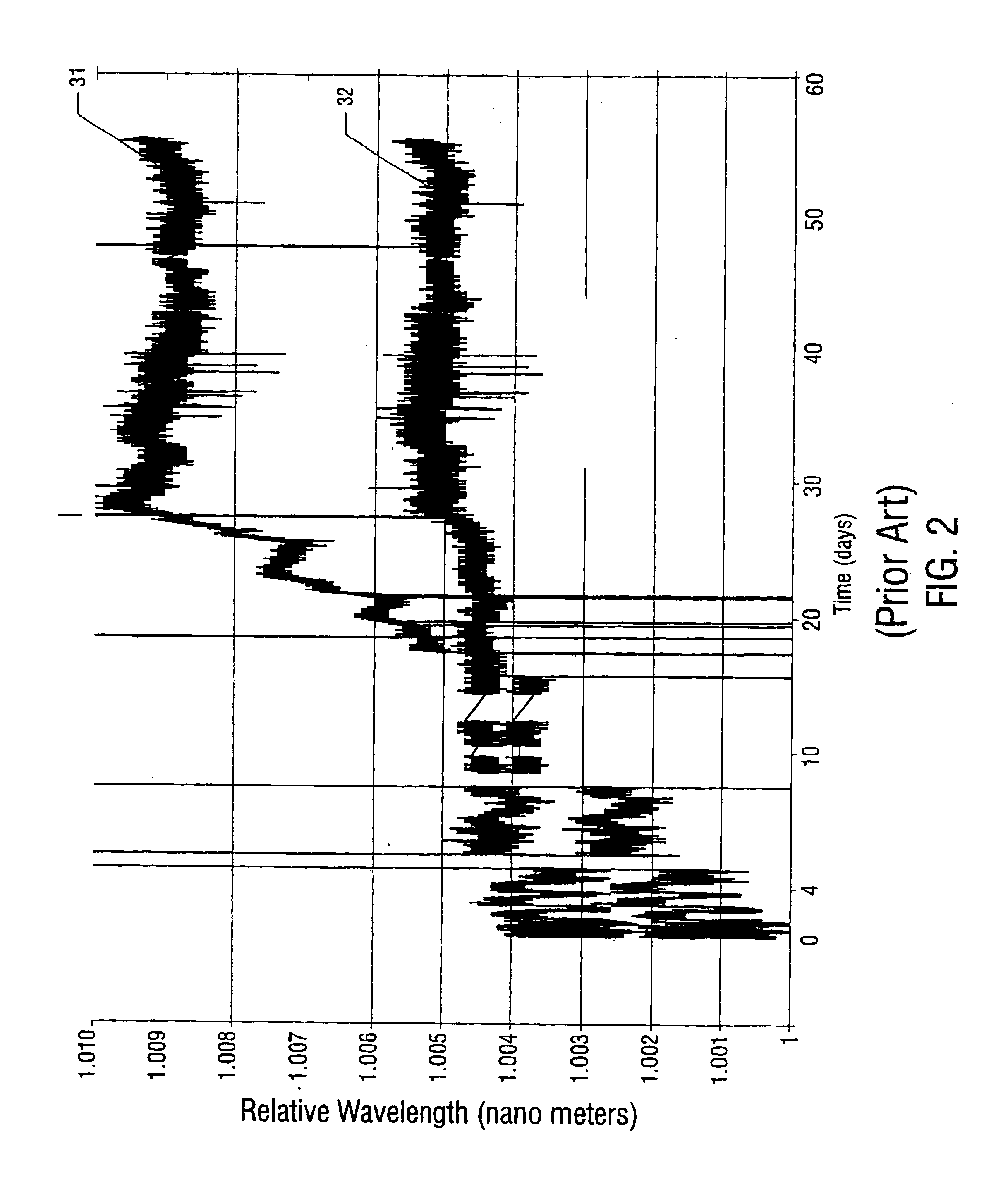Fluid diffusion resistant glass-encased optical sensor
a technology of optical sensors and diffusion protection mechanisms, which is applied in the direction of optical radiation measurement, force measurement by measuring optical property variation, instruments, etc., can solve the problems of poor signal to noise ratio, sensitivity and accuracy of fiber optic sensors, and often harsh environments for sensors, etc., to achieve enhanced force to wavelength shift sensitivity, low hysteresis, and easy scalable for the desired sensitivity
- Summary
- Abstract
- Description
- Claims
- Application Information
AI Technical Summary
Benefits of technology
Problems solved by technology
Method used
Image
Examples
Embodiment Construction
[0019]Referring to FIG. 1, a tube-encased fiber Bragg grating transducer 1 comprises a known optical waveguide 10, e.g., a standard telecommunication single mode optical fiber, having a pressure Bragg grating 12 and a temperature Bragg grating 13 impressed (or embedded or imprinted) in the fiber 10. The fiber 10 is encased within shell 20 such as is described in copending U.S. patent application Ser. Nos. 09 / 455,867, entitled “Bragg Grating Pressure Sensor,” filed Dec. 6, 1999, and Ser. No. 09 / 455,865, entitled “Tube-Encased Fiber Grating,” also filed Dec. 6, 1999, both of which are hereby incorporated by reference in their entirety.
[0020]In one embodiment, the transducer element 1 is constructed by fusing a bare photosensitive fiber 10 in a fused silica capillary tube 15, which functions as a piston as will be described herein below. In the embodiment shown in FIG. 1, Bragg grating 12 is approximately 5 mm in length (although other lengths are possible) and is disposed in the “dogb...
PUM
 Login to View More
Login to View More Abstract
Description
Claims
Application Information
 Login to View More
Login to View More - R&D
- Intellectual Property
- Life Sciences
- Materials
- Tech Scout
- Unparalleled Data Quality
- Higher Quality Content
- 60% Fewer Hallucinations
Browse by: Latest US Patents, China's latest patents, Technical Efficacy Thesaurus, Application Domain, Technology Topic, Popular Technical Reports.
© 2025 PatSnap. All rights reserved.Legal|Privacy policy|Modern Slavery Act Transparency Statement|Sitemap|About US| Contact US: help@patsnap.com



